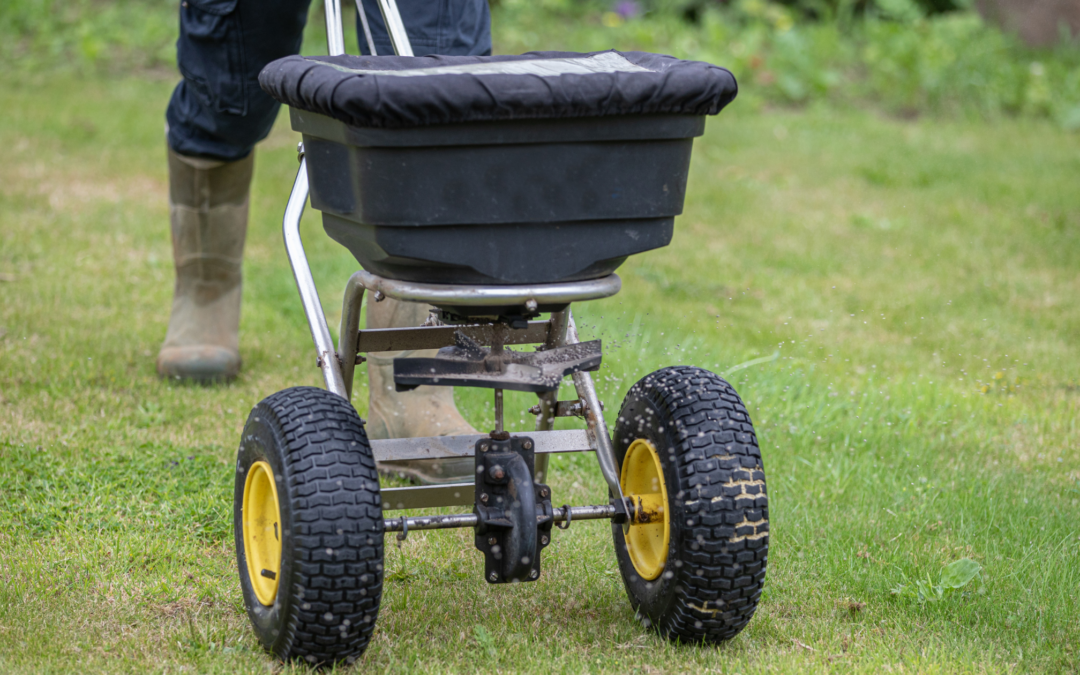
Aug 29, 2023 | Lawn
As the final days of summer wind down and the crisp air of autumn starts to make its presence known, it’s time to shift our focus from pool parties and barbecues end-of-summer lawn care maintenance. The end of summer marks a crucial period for ensuring the health and vitality of your lawn as it transitions into the cooler months. By following a few simple steps, you can make sure your lawn remains lush and vibrant throughout the fall and beyond.
1. Assess and Repair
Before embarking on your end-of-summer lawn care routine, take a walk around your yard to assess its current condition. Look for signs of wear and tear, such as thinning grass, bare patches, or compacted soil. Identify any areas that might require special attention or repair.
2. Aerate
Aerating your lawn is a crucial step in maintaining healthy grass. Over the summer, the soil can become compacted due to heavy foot traffic and other activities. Aerating involves perforating the soil with small holes to allow air, water, and nutrients to penetrate deeply. This promotes root growth and overall lawn health. You can rent an aerator or hire a professional to do the job.
3. Seeding and Overseeding
Late summer or early fall is an ideal time to seed or overseed your lawn. Overseeding involves spreading grass seed over existing grass to fill in thin areas and promote a denser lawn. Choose a high-quality grass seed that is suitable for your region and lawn conditions. After seeding, keep the soil consistently moist until the new grass becomes established.
4. Fertilize
Applying a balanced fertilizer in late summer helps to strengthen your lawn’s root system and promote growth. Look for a fertilizer with a higher nitrogen content, as nitrogen encourages leaf and stem growth. Follow the manufacturer’s instructions for application rates, and be sure to water the lawn after fertilizing to help the nutrients penetrate the soil.
5. Weed Control
Weeds can quickly take over a lawn if left unchecked. As the summer comes to an end, it’s a good time to address any weed problems. Consider using a post-emergent herbicide to target existing weeds, and apply a pre-emergent herbicide to prevent weed seeds from germinating. Be cautious when using herbicides and follow the instructions carefully to avoid damaging your grass.
6. Watering
As the weather cools down, you’ll need to adjust your watering routine. Aim for deep, infrequent watering rather than shallow and frequent watering. This encourages deep root growth and makes your lawn more resilient in the face of changing weather conditions. Consider investing in a rain gauge to help you determine how much water your lawn is receiving from rainfall.
7. Mowing
Adjust your mowing height slightly higher as fall approaches. Taller grass shades the soil, helping to retain moisture and prevent weed growth. Additionally, avoid cutting more than one-third of the grass height in a single mowing session, as this can stress the grass and leave it vulnerable to disease.
8. Raking and Leaf Removal
As the leaves begin to fall, keep your lawn clear of debris. Piles of leaves can smother the grass and create an environment conducive to disease. Use a rake or leaf blower to gather fallen leaves and either compost them or dispose of them in accordance with local regulations.
By dedicating some time to end-of-summer lawn care, you’re setting the stage for a healthy and vibrant lawn in the coming months. Remember that each lawn is unique, so consider your local climate and specific grass type when tailoring your care routine. With proper attention and maintenance, you can enjoy a stunning lawn that remains the envy of the neighborhood well into autumn and beyond.
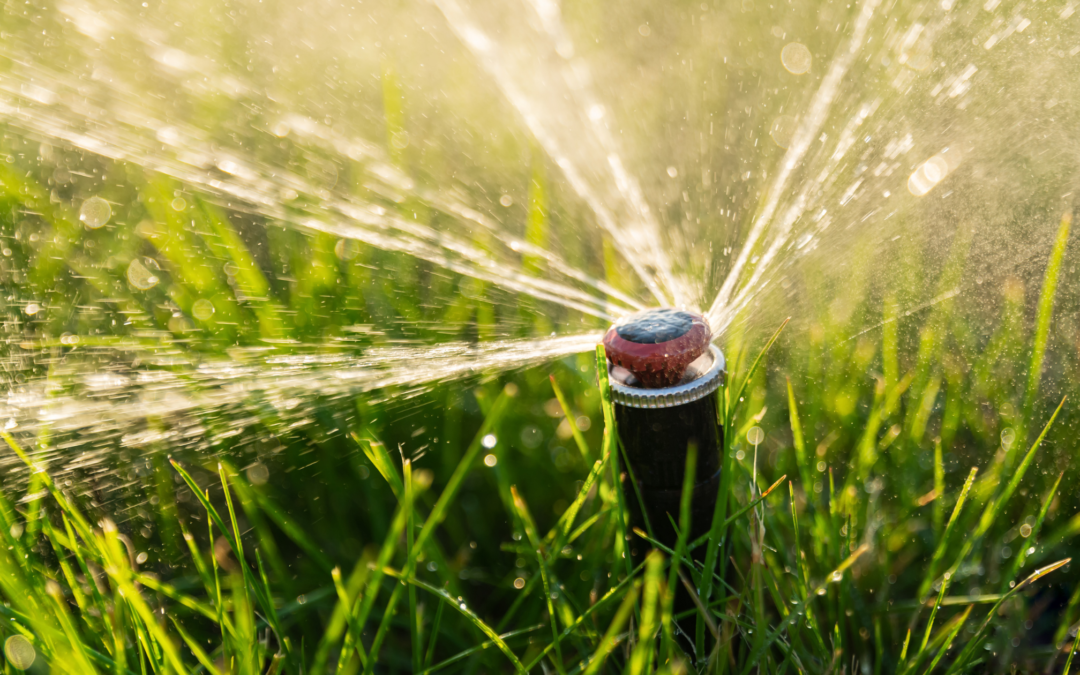
Jul 25, 2023 | Lawn
A well-maintained lawn is the crown jewel of any home, providing a lush and inviting outdoor space. Proper watering is one of the most critical aspects of lawn care, as it directly impacts the health and appearance of your grass. While it might seem like a simple task, knowing the best time to water your lawn can make all the difference between a vibrant, thriving lawn and a lackluster one. In this blog, we’ll delve into the science and secrets behind watering your lawn at the right time for optimal results.
The Science Behind Lawn Watering
Understanding the science of lawn watering is crucial to grasp the significance of timing. Water is vital for plant growth, as it is responsible for facilitating nutrient uptake and photosynthesis. The roots of grass absorb water from the soil, but they also require oxygen to survive. Overwatering can lead to suffocation of the roots, while underwatering can cause stress and weaken the grass.
Best Time to Water: Early Morning
When it comes to watering your lawn, the early bird gets the worm. The best time to water your lawn is in the early morning, ideally between 4 a.m. and 9 a.m. During this period, the temperatures are cooler, and the sun is not yet at its peak, reducing water evaporation. Several advantages of morning watering include:
- Minimizing Water Loss: Watering in the early morning reduces water loss due to evaporation. When you water later in the day, especially during the hottest hours, a significant portion of the water evaporates before it can be absorbed by the grass roots.
- Preventing Disease: Watering in the morning allows the grass blades to dry quickly, which helps prevent the development of lawn diseases caused by prolonged moisture on the foliage. Fungal diseases, such as powdery mildew, thrive in damp conditions, so morning watering is a preventive measure.
- Boosting Growth: Morning watering provides grass with the moisture it needs to start its day. The grass will be able to absorb the water and nutrients efficiently, promoting healthy growth and overall resilience.
Alternate Timing: Late Afternoon/Early Evening
If watering in the morning is not feasible due to work or other commitments, the second-best time to water your lawn is during the late afternoon or early evening, between 4 p.m. and 7 p.m. While this time is not as ideal as the early morning, it still offers some benefits:
- Cooler Temperatures: Late afternoon and early evening temperatures are cooler than midday, reducing the risk of water evaporation.
- Recovery Time: Watering in the late afternoon allows the grass to recover from the heat stress experienced during the day. It can rejuvenate the lawn and prepare it for the night.
Avoiding Nighttime Watering
Watering your lawn at night, especially just before sunset or after dark, is generally not recommended. Although it might seem convenient, nighttime watering can lead to various issues, including:
- Fungal Growth: Grass that remains wet throughout the night is more susceptible to fungal growth, which can damage the lawn over time.
- Inefficient Absorption: With lower temperatures at night, the grass absorbs water at a slower rate. This can lead to excessive moisture on the surface and potential root problems.
Watering your lawn at the right time is an essential aspect of maintaining a healthy and beautiful outdoor space. By understanding the science behind lawn watering and the significance of timing, you can ensure that your lawn receives the hydration it needs to flourish. With proper watering practices, your lawn will thrive, providing you and your family with a lush, green oasis to enjoy throughout the seasons.
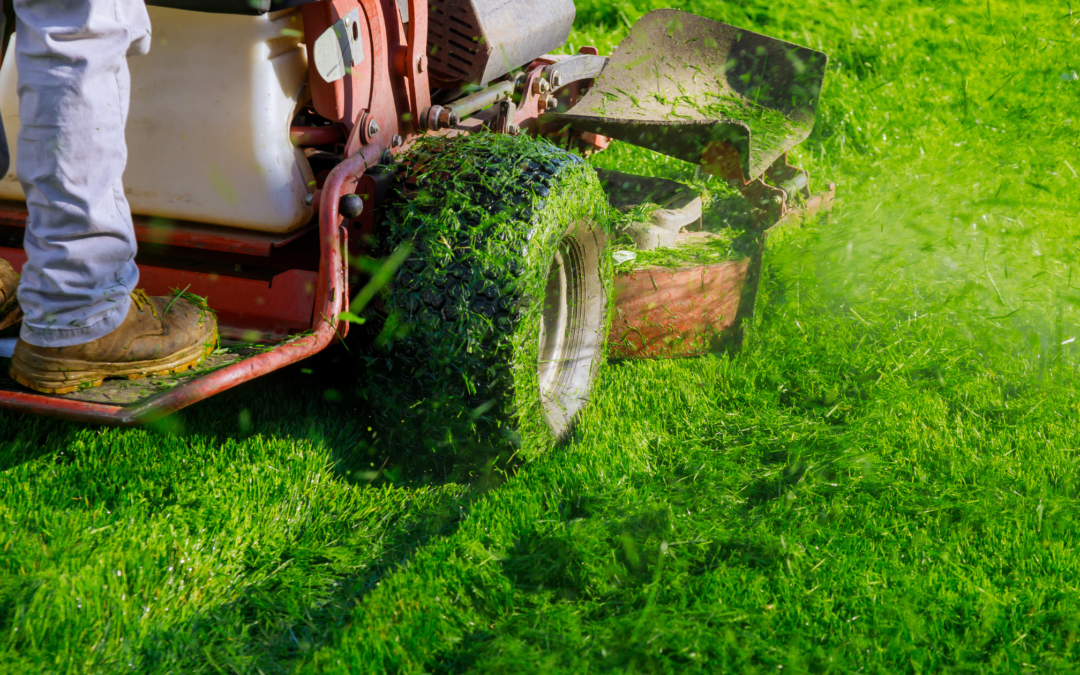
Jun 25, 2023 | Lawn
Maintaining a well-manicured lawn is no easy task. It requires time, effort, and a fair share of expertise. If you find yourself struggling to keep up with the demands of lawn care, hiring a professional lawn mowing service can be a game-changer. Below are the top five reasons why you should hire a lawn mowing service to transform your yard into a lush and beautiful oasis.
1. Expertise and Experience
Lawn mowing is not just about running a mower over the grass. It involves knowledge of different grass types, optimal mowing heights, and proper techniques to avoid damaging the lawn. By hiring a lawn mowing service, you gain access to professionals with extensive expertise and experience in handling various lawn care tasks. They understand the intricacies of lawn maintenance, ensuring your grass is mowed correctly and at the right frequency, leading to a healthier and greener lawn.
2. Time-Saving Convenience
In today’s fast-paced world, time is a valuable commodity. Juggling work, family, and social commitments can leave little room for regular lawn care. Hiring a lawn mowing service allows you to reclaim your time. Instead of spending precious weekends or evenings toiling away in the yard, you can relax and enjoy your free time while the professionals take care of your lawn. They’ll arrive on schedule, efficiently mow your lawn, and tidy up afterward, leaving you with a well-groomed yard without any hassle.
3. Equipment and Efficiency
Maintaining a well-manicured lawn requires more than just a simple push mower. A professional lawn mowing service comes equipped with state-of-the-art tools and machinery specifically designed for the task. From commercial-grade mowers to edgers, trimmers, and blowers, they have everything needed to achieve precise and efficient results. Additionally, these professionals are trained to work quickly and efficiently, ensuring that your lawn is mowed in a fraction of the time it would take you to do it yourself.
4. Consistent and Reliable Service
One of the biggest advantages of hiring a lawn mowing service is the guarantee of consistent and reliable service. They will create a schedule tailored to your needs, ensuring that your lawn is mowed on time, every time. Rain or shine, they’ll be there to keep your yard looking its best. Moreover, professional lawn mowing services often offer comprehensive packages that include additional services like fertilization, weed control, and lawn aeration, allowing you to address all your lawn care needs with a single point of contact.
5. Enhanced Curb Appeal
A well-maintained lawn enhances the overall curb appeal of your property. Whether you’re looking to sell your home or simply take pride in its appearance, a professionally mowed lawn can make a significant difference. By hiring a lawn mowing service, you ensure that your lawn remains healthy, vibrant, and aesthetically pleasing throughout the year. Their expertise in lawn care will not only transform your yard into an inviting space but also boost the value of your property.
Maintaining a beautiful lawn requires time, knowledge, and effort. By enlisting the services of a professional lawn mowing service, you can enjoy the benefits of a well-manicured yard without sacrificing your time or expertise. So, sit back, relax, and let the experts handle your lawn care needs! Call or email us today for more information.
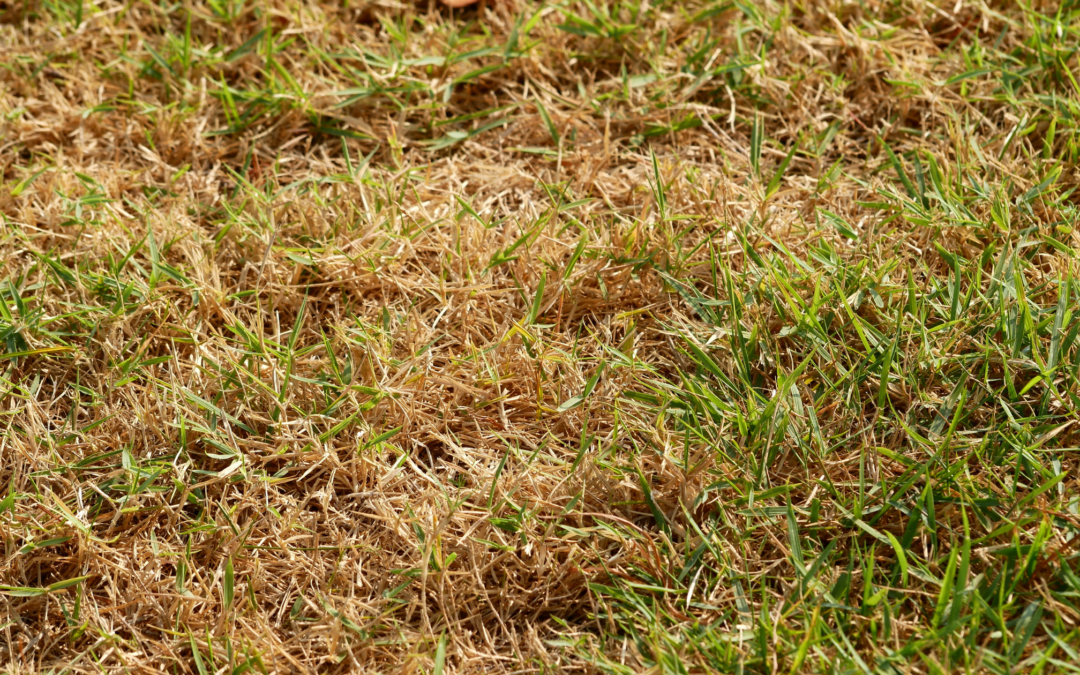
Jun 5, 2023 | Lawn
A lush and green lawn is often the pride and joy of homeowners. However, maintaining its vibrancy can be a challenge during a drought when water conservation becomes crucial. Thankfully, there are practical strategies that can help you keep your lawn healthy even in dry conditions. In this blog, we will explore effective techniques to keep your lawn healthy during a drought.
Set Proper Watering Practices
During a drought, it’s important to adjust your watering habits to promote conservation. Water your lawn deeply but infrequently, encouraging deeper root growth. Watering early in the morning or late in the evening reduces evaporation. Additionally, consider investing in a smart irrigation system that adjusts watering schedules based on weather conditions and soil moisture levels. This ensures water is used efficiently and prevents overwatering, which can weaken the grass and lead to disease.
Implement Proper Mowing Techniques
Adjusting your mowing practices during a drought can help your lawn withstand the stress. Set your mower blade higher to leave the grass slightly longer, which helps retain moisture in the soil and provides shade to the roots. Avoid cutting more than one-third of the grass height at a time, as this can weaken the lawn. Keep mower blades sharp to create clean cuts, preventing damage and water loss. Leaving grass clippings on the lawn acts as a natural mulch, reducing evaporation and providing essential nutrients.
Aerate and Improve Soil Health
Aerating your lawn allows for better water penetration and enhances root growth. Use a core aerator to create small holes in the soil, reducing compaction and improving water absorption. Consider incorporating organic matter like compost into the soil to improve its ability to retain moisture and provide essential nutrients to the grass. This helps create a healthy environment for the roots, enabling them to withstand drought stress and maintain vitality.
Apply Proper Fertilization and Weed Control
During a drought, it’s crucial to be mindful of the type and timing of fertilizer application. Opt for slow-release or organic fertilizers that gradually release nutrients to the grass. Avoid excessive nitrogen applications, as this can stimulate excessive growth that requires more water. Spot-treat weeds instead of blanket applications to minimize water usage. Weeds compete with grass for water and nutrients, so maintaining a weed-free lawn reduces stress on the grass during drought conditions.
Maintaining a healthy lawn during a drought requires proactive measures to conserve water and provide optimal care. By implementing these tips you can help your lawn thrive even in dry conditions. Remember, a healthy lawn is resilient and better equipped to endure periods of water scarcity, making it an asset to both your property and the environment.
Need help maintaining your lawn? Let us take care of the work for you! Call or email us today for more information.
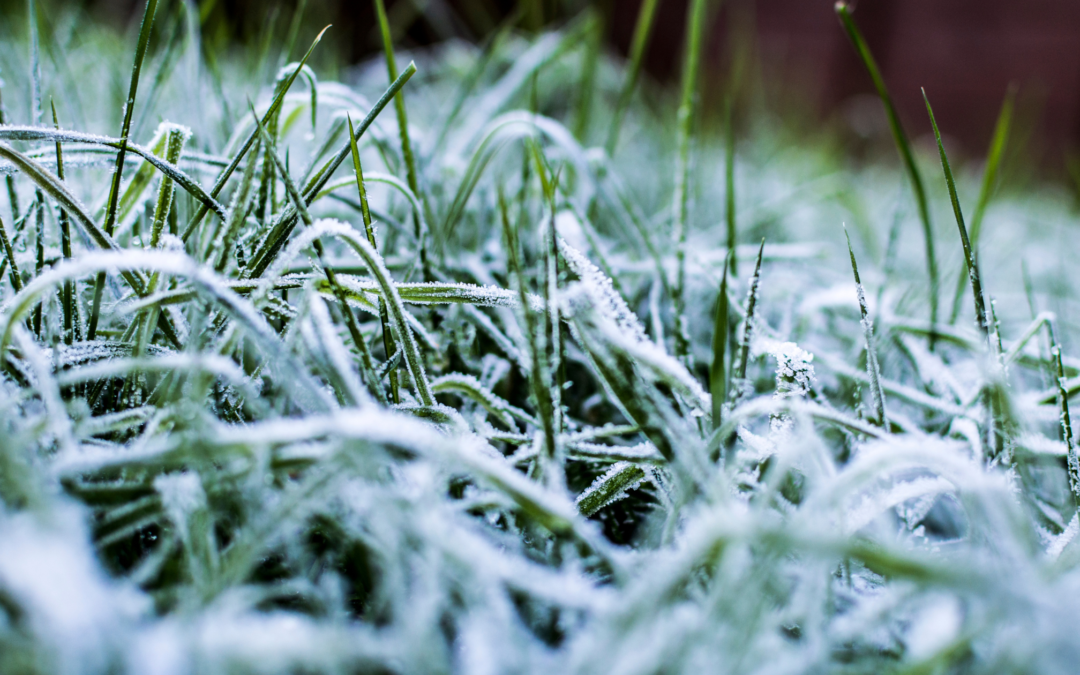
Apr 17, 2023 | Lawn, Plants and Trees
Spring is a time of renewal and growth in the natural world, but it’s also a time of uncertainty when it comes to weather. One of the biggest threats to your lawn during the spring season is a sudden freeze, which can damage or even kill your grass. Fortunately, there are steps you can take to prepare your lawn for a spring freeze and minimize the risk of damage. Here are some of the most important things you can do to protect your lawn from a late freeze.
Rake your lawn
Before a spring freeze, it’s important to remove any dead leaves, sticks, and other debris from your lawn. This will allow your grass to breathe and absorb more sunlight, which will help it stay healthy and strong. Raking your lawn also removes any dead grass, which can become a breeding ground for mold and other fungi. Be sure to dispose of the debris properly, either by composting it or disposing of it in your yard waste bin.
Fertilize your lawn
Fertilizing your lawn is an important step in preparing it for a spring freeze. Fertilizer provides your grass with the nutrients it needs to grow and thrive, and it can also help your grass withstand colder temperatures. Look for a fertilizer that is high in nitrogen, which will encourage your grass to grow quickly and become more resistant to damage. Be sure to follow the instructions on the fertilizer package carefully, and don’t over-fertilize, as this can damage your grass.
Water your lawn
Keeping your lawn well-watered is another important step in preparing it for a spring freeze. Watering your lawn deeply and infrequently encourages your grass to grow deep roots, which can help it survive colder temperatures. However, be careful not to over-water your lawn, as this can lead to fungal growth and other problems. If you’re not sure how much to water your lawn, a good rule of thumb is to water it deeply once a week, or whenever the top inch of soil feels dry.
Mow your lawn
Mowing your lawn is another important step in preparing it for a spring freeze. Be sure to keep your grass at a moderate height, as taller grass is more susceptible to damage from frost and freezing temperatures. However, don’t mow your lawn too short, as this can also damage your grass and leave it vulnerable to cold temperatures. A good rule of thumb is to keep your grass at a height of 2-3 inches.
Cover your plants
If you have any plants or shrubs in your lawn, it’s a good idea to cover them before a spring freeze. You can use blankets, tarps, or other materials to protect your plants from freezing temperatures. Be sure to remove the covers once the temperature rises above freezing, as this will allow your plants to get the sunlight and air they need to grow.
Preparing your lawn for a spring freeze is an important step in keeping it healthy and beautiful all season long.With a little bit of preparation, you can ensure that your lawn will thrive no matter what the weather brings.
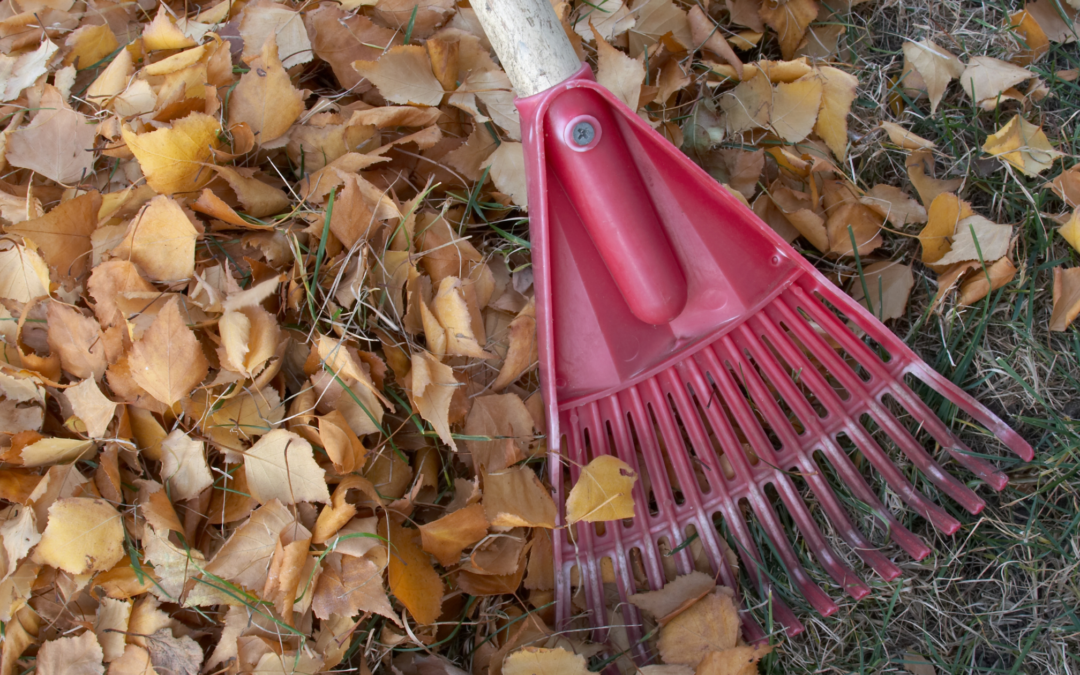
Mar 19, 2023 | Gardening, Lawn
The snow is melting and the temperatures are rising. That means it’s almost time for a spring cleanup in your yard. A little work now can save you a lot of time and effort later in the season. Here’s a Midwestern’s guide to a spring cleanup.
Rake the Leaves
The first step to cleaning up your yard is to rake the leaves. Over the winter, leaves and other debris have likely accumulated on your lawn and in your garden beds. Raking them up will give your lawn a chance to breathe and allow sunlight to reach the soil. It will also make it easier to see what needs to be done in terms of weeding and planting.
Clear Out Dead Plants
Once you’ve raked the leaves, take a close look at your garden beds. Remove any dead plants or flowers that didn’t survive the winter. This will make room for new growth and help prevent disease and pests from spreading.
Prune Trees and Shrubs
Now is the time to prune any trees or shrubs in your yard. This will help them grow healthier and stronger throughout the season. Prune any damaged or dead branches, as well as any branches that are crossing or rubbing against each other. This will prevent the branches from becoming entangled and allow more sunlight to reach the tree or shrub.
Weed Garden Beds
Weeding is a necessary chore in any garden, but it’s especially important in the spring. Weeds can quickly take over your garden beds and steal nutrients from your plants. Take the time to pull out any weeds by hand or use a hoe to remove them. Be sure to get the entire root to prevent them from growing back.
Add Mulch
Once you’ve weeded your garden beds, it’s a good idea to add a layer of mulch. Mulch helps retain moisture in the soil, suppresses weed growth, and adds nutrients to the soil as it breaks down. Choose a natural mulch, such as wood chips or shredded leaves, and spread it evenly around your garden beds. If your garden beds have old mulch in them, you may need to remove the old mulch and add more to freshen up.
Clean Up Hardscapes
Hardscapes, such as patios, sidewalks, and driveways, can also accumulate debris over the winter. Use a broom or leaf blower to remove any leaves, sticks, or other debris. If you have a pressure washer, you can also use it to clean off any dirt or grime.
Check Your Lawn for Thinning Areas
Take a close look at your lawn to see if there are any areas that need attention. Are there bare spots or areas of thin grass? If so, consider overseeding or reseeding your lawn. This will help fill in any bare spots and promote healthy growth.
A spring cleanup in your yard is an important task to start the season off on the right foot. By following these tips, you’ll have a beautiful and healthy yard all season long. Don’t have the time to kick start your yard this spring? Let us take care of the work for you! Call or email us today for more information. Spring cleanup spots fill up quickly so act fast!
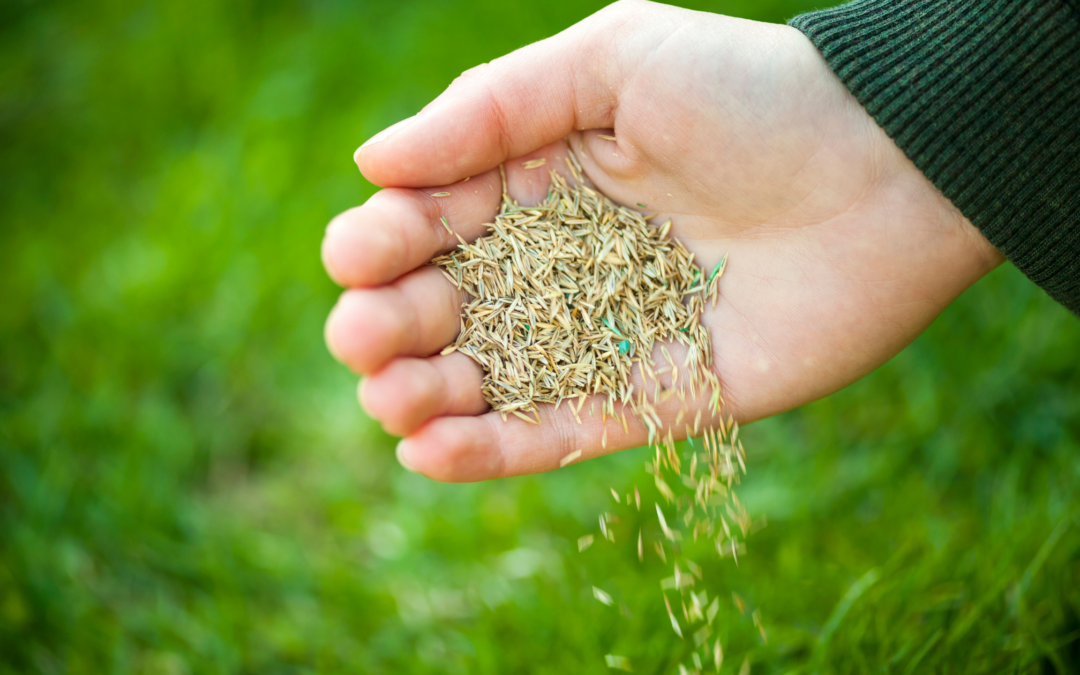
Feb 17, 2023 | Lawn
When it comes to maintaining a beautiful lawn, proper seeding is an essential part of the process. Seeding helps fill in bare spots, promotes thicker growth, and improves the overall health of the grass. If you live in Wisconsin, knowing when to seed your lawn is especially important, as the state experiences harsh winters and hot summers. In this blog, we’ll discuss the best time to seed your lawn in Wisconsin and what you need to know to get the best results.
Best Time of Year for Seeding Your Lawn in Wisconsin
The best time to seed your lawn in Wisconsin is in the fall, from mid-September to mid-October. During this time, the soil temperature is still warm from the summer months, which allows the seed to germinate quickly. Additionally, the cooler fall temperatures are ideal for grass growth, and the moisture in the soil helps keep the seed moist, promoting rapid germination. The fall is also the best time to seed because the grass has plenty of time to establish itself before winter sets in.
Choosing the Right Grass Seed
When seeding your lawn in Wisconsin, it’s important to choose the right type of grass seed. The two most common types of grass in the state are cool-season grasses, such as Kentucky bluegrass and fescue, and warm-season grasses, such as Bermuda and zoysia. Cool-season grasses are best for lawns in Wisconsin because they can handle the state’s harsh winters and thrive in the cooler fall and spring temperatures. Warm-season grasses, on the other hand, are not well-suited for the state’s climate and may struggle to survive the winter months.
Proper Seeding Prep
Once you’ve chosen the right type of grass seed, it’s time to prepare the soil. Start by removing any dead grass and debris from the area you want to seed. Then, loosen the soil by raking it, and spread a thin layer of topsoil over the area. Next, spread the grass seed evenly over the soil, making sure to cover it completely. To ensure good seed-to-soil contact, you can lightly rake the seed into the topsoil or gently press it down with a lawn roller.
After Seeding Care
After you’ve seeded your lawn, it’s important to keep the soil moist to promote germination. This means watering the seed twice a day, once in the morning and once in the evening, for 10-15 minutes each time. It’s also important to keep foot traffic off the seeded area until the grass has had a chance to establish itself, which usually takes about 4-6 weeks.
Finally, fertilizing your lawn after seeding is an important step in promoting healthy growth. A slow-release fertilizer can help provide the grass with the nutrients it needs to grow strong and healthy. You can also choose to add a starter fertilizer, which is designed specifically for new seedlings.
By following these tips and taking care of your newly seeded lawn, you can enjoy a lush, green lawn for years to come!
Looking for help taking care of your lawn once spring hits? Friske Lawn Care offers services from spring clean ups to mowing. Contact us for a free quote today!
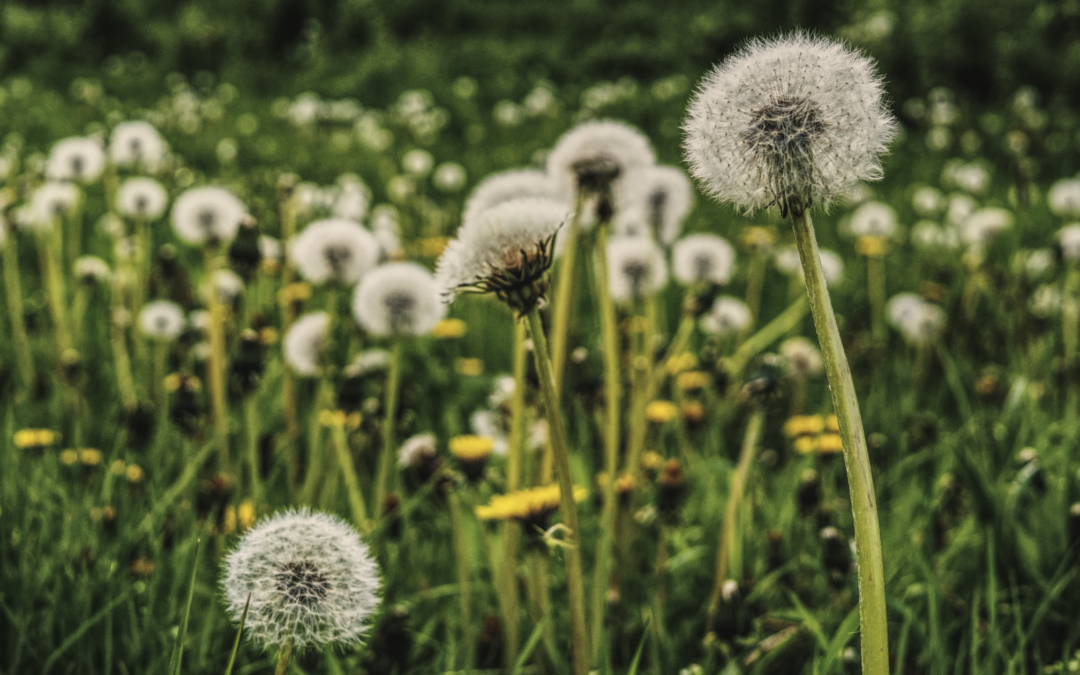
Jan 31, 2023 | Gardening, Lawn
Dandelions are a common weed that can be found in many lawns and gardens. While they are often considered a nuisance, there are few simple techniques to help you get rid of dandelions.
Remove the Dandelions Manually
This can be done by using a weeding tool or a long-handled cultivator to dig up the roots of the dandelions. It is important to make sure to remove as much of the root as possible. Dandelions don’t need much root to start growing again!
Use a Chemical Herbicide
These can be applied to the leaves of the dandelions, and will be absorbed by the plant and travel down to the roots, killing the entire plant. However, it is important to use a herbicide that is specifically labeled for use on dandelions, as some herbicides may harm other plants in your lawn or garden.
Use a Natural Herbicide
Examples of natural herbicide would be vinegar or boiling water. These can be applied directly to the leaves of the dandelions, and will cause the plant to dry out and die. However, it is important to note that vinegar and boiling water can also harm other plants in your lawn or garden, so be careful when using these methods.
Prevent Dandelions From Growing in the First Place
One way to do this is to maintain a healthy lawn by mowing it regularly, fertilizing it, and watering it as needed. A healthy lawn will be better able to compete with weeds, making it less likely for dandelions to take root. Additionally, making sure to remove any dandelions that do appear as soon as possible will prevent them from going to seed and spreading to other parts of your lawn or garden.
At the end of the day, it is important to choose the method that works best for you and your specific situation, and to be careful when using any chemicals or natural herbicides to avoid harming other plants.
Need help keeping dandelions and other weeds out of your landscape beds? Friske Lawn Care can help with that! Reach out for a quote today for our weeding services!
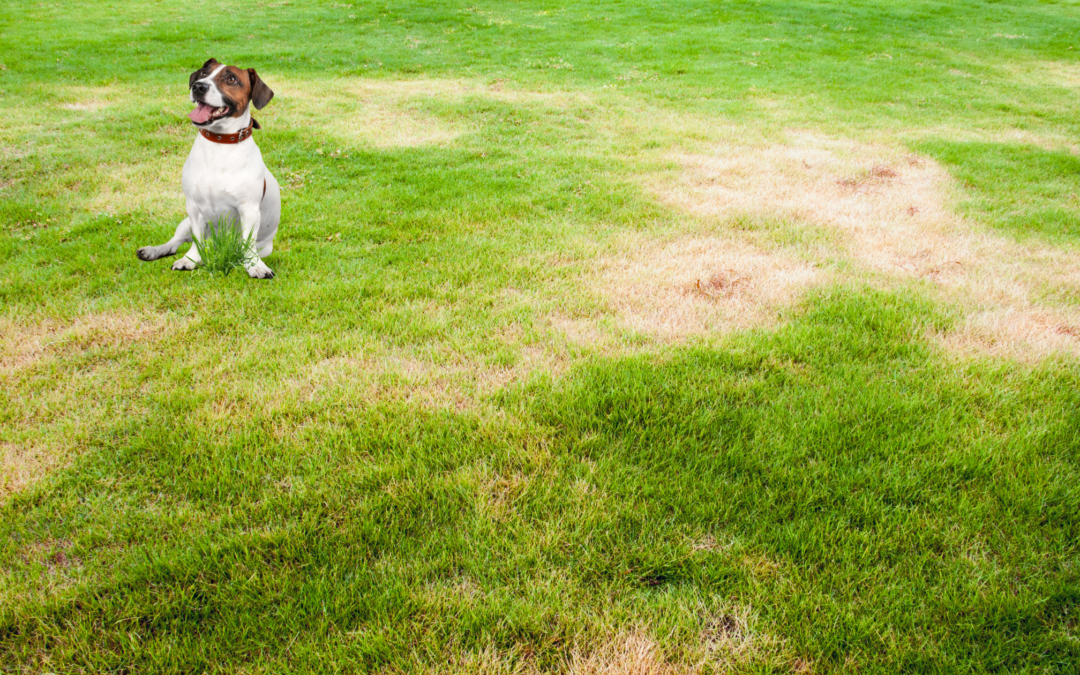
Jan 3, 2023 | Lawn
Having a dog is all fun and games, until your yard starts to look terrible from all of the urine spots Fido leaves behind. Fortunately, there is hope for your dog and your lawn to coexist. Read on to learn how to fix dog urine spots on your lawn.
Why does dog urine leave spots in the lawn?
Dog urine lawn spots happen because of the high amount of nitrogen and related salts naturally contained in dog urine. Lawn damage happens when concentrated urine collects in the same area repeatedly, like fertilizer burn.
Some areas of your lawn may recover on their own, however, areas that your dog frequents for urination will typically need dog urine repair.
How to Fix Dog Urine Spots On Your Lawn
With the right products, and a little patience, dog urine grass repair can be a pretty easy fix. The remedy for brown spots is different than the remedy for green spots, so knowing which ones you are dealing with is important.
Fixing Green Lawn Spots:
Nitrogen is an essential plant nutrient, so some of your dogs favorite spots to relieve himself can become greener from the urine’s nitrogen. This tends to happen more with grass hasn’t been fertilized with enough nitrogen. If this is the case, your lawn could have low nitrogen. You can find out the exact levels by taking a sample of your soil to be tested. To correct this, apply Pennington UltraGreen Lawn Fertilizer 34-0-4 every 60 to 90 days through the growing season, or as needed according to your soil lab results. This particular fertilizer helps to increase drought tolerance, which is much like tolerance to urine salts. It will also help boost nutrients for a nice green lawn.
Fixing Brown Lawn Spots:
Brown spots are more severe because they are dead or dying grass. A lawn that is weak or overly dry is more prone to this type of dog urine damage. If you start to see spots like this, water the areas repeatedly to flush out the urine salts. Saturating the areas will help clean the surrounding soil.
You cannot bring dead grass back to life, but you can repair the areas affected by the dog urine spots. Start by removing the dead grass and then treating the area with Pennington One Step Complete. This product is easy-to-use and premixed, for quick and simple lawn repair. You get premium grass seed, professional-grade fertilizer and natural mulch in one product. Be sure to choose the best variation for your grass type and growing climate.
Be sure to keep your pet away from any areas that are being treated. Your dog should be safe around these treatments, but you don’t want to waste all of your hard work. Generally it is best to let grass grow and mow it at least three to four times before you allow dog or people traffic.
Now that you’ve fixed all those spots in the lawn, maybe you want to let someone else take care of your regular lawn maintenance. Friske Lawn Care would be happy to tackle this for you. Reach out today for a free quote!
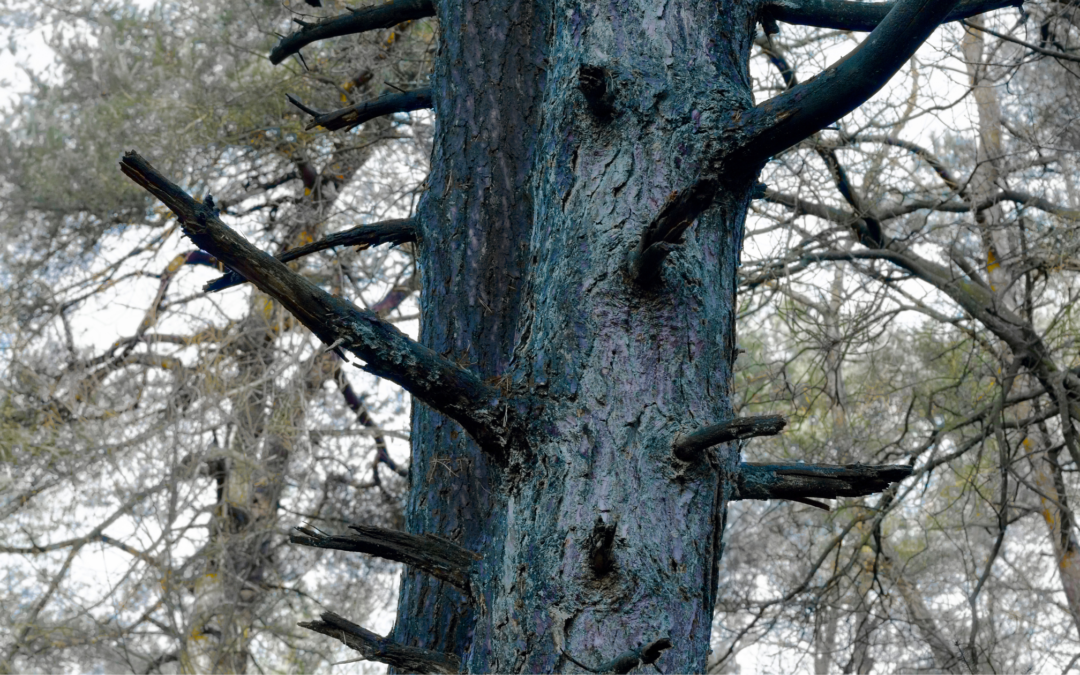
Nov 30, 2022 | Plants and Trees
Do you have a tree on your property that doesn’t look quite right? There is a possibility that your tree is dying. There are signs to check for, making it easier to decide if you need to treat the tree or just remove it. Here are some signs to look to to confirm whether or not your tree is dying.
Check the Trunk
Check the tree trunk for the following:
- Vertical cracks
- Missing bark
- Cankers or areas of dead bark
- Scratch the trunk to check the inner layer of bark. If it is brown, the tree is likely dead.
Check the Branches
Look for the following signs in the branches:
- Loss of leaves out of season
- Brown or brittle leaves during the growing season
- Dead leaves holding onto branches
- Weak joints between branches
Damaged Roots
If your tree suddenly develops a noticeable lean, you may have root damage. Anther sign of this is small branches sprouting from the bottom of the tree. If your tree has exposed roots you can check to see if the roots are turning slimy.
Bugs and Fungus
A large fungus growth on a tree can be a good indicator that the tree is rotting inside. Any critters such as bark beetles or carpenter ants are signs that a tree is dying.
Change in Surroundings
A change in the tree’s environment can have a big impact on it. If things around the tree have been moved and the tree is getting more wind or light, that can have a negative effect on the tree. If there was any construction near the tree, the roots may have been damaged.
Prevention
Of course there are ways to prevent a tree from dying:
- Avoid hitting the tree when doing yard work
- Be gentle around exposed roots
- Give the tree lots of room to breathe and absorb light. If you’re planting a new tree, put it in an area where it can grow fully.
- If you are in a drought, water your trees
- Be sure to prune trees as needed and at the right time of year
Need help taking care of the trees on your property? Friske Lawn Care offers a wide variety of tree care programs in addition to pruning services. Reach out today for a free quote!


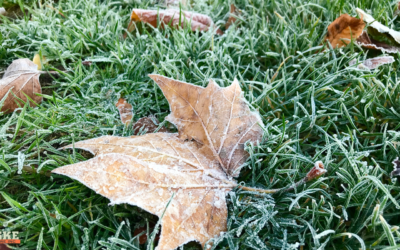

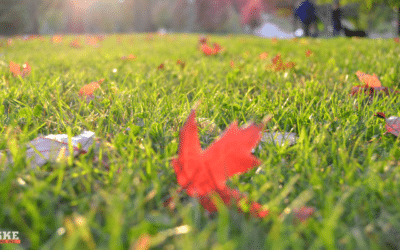









Recent Comments